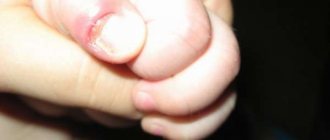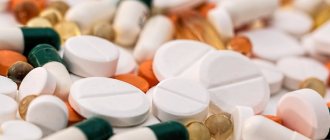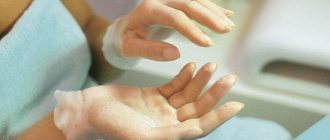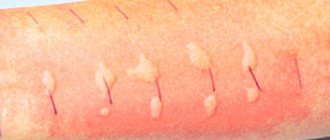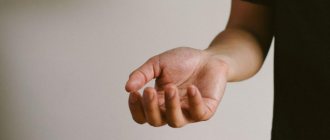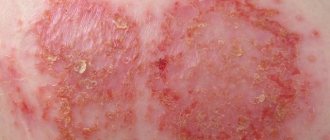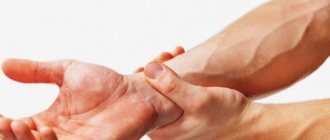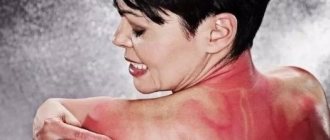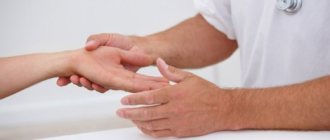Watery blisters on the hands: causes
Blisters appear on the surface of the palms in the following cases:
- Getting burned. Chemical burns are caused by exposure to acidic and alkaline compounds, as well as by contact with salt solutions.
- Thermal burn is a response to elevated temperatures of a contacting substance or any environment. For example, boiling water, hot metal, open fire or electric current.
- Damage to the skin after prolonged rubbing of hard objects on the palm. So-called wet calluses appear. For example, when working with your hands for a long time - digging up a vegetable garden, gardening and field work with tools. They have a long-lasting mechanical effect. The result is blisters on the palms.
- Allergic reactions to insect bites, sun rays, plant pollen. Bubbles can appear even if an allergy sufferer pets an animal whose fur they are allergic to.
All the described reasons for the appearance of blisters on the palms are due to external factors. Treatment of such manifestations will require mainly the use of local remedies that directly affect problem areas.
In addition to external factors, there are other reasons that cause watery formations on the palms.
These are internal infectious, viral and autoimmune diseases:
- pemphigus;
- lichen (vesicular and also herpes zoster);
- viral – herpes, chicken pox;
- pustular psoriasis;
- dyshidrosis;
- scarlet fever;
- diseases of the endocrine system;
- lupus erythematosus;
- seborrheic dermatitis;
- hormonal imbalances, especially in adolescents and pregnant women.
Treatment of such diseases requires an integrated approach, often carried out in a hospital under the supervision of specialists. And watery rashes are treated symptomatically.
The following may cause discomfort:
- detergents,
- caring cosmetics,
- aggressive components of building materials,
- strong wind and frost,
- medical drugs,
- allergenic food.
Watery pimples that appear on the hands itch, burst, and new ones appear in their place.
Burns occur not only from contact with fire, hot surfaces, the sun, but also with plants. Redness and swelling immediately appear, followed by large or small blisters. The strongest reaction is seen on light skin.
Watery pimples on the hands may appear after visiting the beach or after spending a long time near a sunny window, because glass does not block ultraviolet radiation. For example, working in an office, traveling on a bus.
Herpes virus
It affects a weakened body and remains there forever. Symptoms appear in different parts of the body depending on the strain. Herpes is less common on the back of the hands and fingers than on the face, but no one is immune from this phenomenon. The disease develops in stages.
- Itching is felt and swelling appears.
- A rash is visible on the hands in the form of blisters with a grayish liquid.
- The blisters burst and the filling spreads, infecting other areas. It is very important at this stage to prevent infection of neighboring tissues.
- The wounds dry out and become covered with scabs. After a few days, the crusts come off on their own. The process cannot be accelerated.
Chickenpox and measles are infectious diseases and are transmitted by airborne droplets through household contact. Additional symptoms, in addition to the appearance of watery blisters on the fingers, palms and other parts of the body, are: fever, general malaise.
The fever and rash last about seven days. In some cases there may be serious complications. After chickenpox and measles, the body develops immunity to these diseases.
Urticaria appears more often with weak immunity. It can occur spontaneously and also pass quickly, or become chronic and last for several months.
Bullous impetigo
This is a type of streptococcal skin infection. Penetrates through damaged epidermis (abrasions, cuts). As a result, small bubbles with a cloudy liquid appear. You feel weak, the temperature rises, and a headache appears. Bullous impetigo does not become chronic and is not hereditary. Small, watery pimples appear on the arms but do not affect the elbow joints.
Coxsackie A 16
A viral infection that causes small blisters on the hands and feet and sores in the mouth. The blisters are often localized between the fingers and disappear within 10 days. Mouth ulcers heal within a week. The disease is spread through household means.
The virus lives in the digestive tract and is accompanied by fever and chills.
Scabies
This is an infectious disease that is transmitted through personal contact with a sick person or the use of personal hygiene items.
The female scabies mite lays eggs under the skin and the larvae hatch after 2-4 days. The process of their life activity causes severe itching, which intensifies in the evening and at night.
Prickly heat
Small bubbles on the fingers and palms are the body’s reaction to intense sweat production and slow evaporation. Depends on the number of sweat glands per square centimeter, the speed of metabolic processes, and skin sensitivity. This manifestation may be a consequence of a disease of the internal organs, constantly wearing rubber gloves.
There are three forms of prickly heat:
- Crystalline. The bubbles are filled with pearlescent liquid. They are not accompanied by itching and disappear on their own.
- Red. Red blisters on the fingers itch. This form of prickly heat requires medical treatment.
- Deep. Severe form, which can cause complications. In most cases, the doctor recommends hospitalization.
Often, the body reacts with skin rashes to malfunctions in the digestive, genitourinary, cardiovascular, and endocrine systems. In this case, acne can appear all over the body, including the arms. In diabetes mellitus, the bubbles are localized between the fingers and on the bends of the elbows. There is a high likelihood of a rash with cirrhosis of the liver.
Other reasons
Psychological stress, stress, sleep disorders, overwork directly affect the condition of the skin. As a result, a rash appears, blisters on the skin itch (water blisters on the hands are visible in the photo). Mainly concentrated between the fingers.
Rashes may indicate infection with diseases that are not common in our territory. This usually happens after a trip to another continent or to a country with a hot climate.
There are many reasons why blisters appear on the hands, because this part of the body is most often exposed to adverse environmental influences. The skin comes into contact with household chemicals and other aggressive chemicals.
Itchy blisters under the skin on the fingers can appear as a result of an allergic reaction, a malfunction of internal organs and systems, viral, fungal or parasitic diseases, as well as a violation of the protective function of the epidermis.
Allergy
https://www.youtube.com/watch?v=gvy8Xh4IrkM
Blisters between the fingers can be an allergy to food, household chemicals, cosmetics, animal hair, or chlorinated water. If the rash is of allergic origin, it is always accompanied by itching.
In some cases, allergies are caused by severe frost or prolonged exposure to ultraviolet radiation. Blisters may also appear due to medications.
Typically, a blistering rash of infectious origin occurs in children. It may be accompanied by a deterioration in general condition and intoxication.
Red blisters that do not stop itching, appear on the palms of the hands, between the fingers, and then move to other parts of the body, indicate scabies. This is a contagious disease, so it is important to recognize the first symptoms in time. The first sign is a small itchy blister on the little finger or index finger.
With fungal infections, the skin itches, peels, becomes dry and cracks. The bubbles themselves have a dense structure.
Sometimes itchy rashes on the palms occur due to severe stress. In this case, they are filled with a clear liquid and are located along the nerve endings.
Bubbles may also appear for the following reasons:
- avitaminosis;
- endocrine disorders;
- hormone imbalance;
- metabolic disease;
- poor nutrition;
- parasite infection;
- diseases of the gastrointestinal tract (gastritis, ulcers).
When there is a large accumulation of toxins in the intestines, a small rash appears, and inside it there is a clear liquid.
Skin diseases
If painful rashes filled with liquid appear, which burst over time, forming a crust on the surface, then we are talking about pemphigus, or pemphigus. This is an autoimmune disease, the true cause of which is difficult to detect.
With dermatitis herpetiformis, severe itching appears, and blisters form on the skin of the palms, fingers, hands and other parts of the body.
Dyshidrotic eczema is accompanied by severe itching and blisters on the palms and fingers. Epidermolysis bullosa is common in elderly patients. The blisters are very itchy and the skin around them turns red.
External reasons
Watery blisters on the skin of the hands may be the result of irritation or an allergic reaction. This problem is caused by contact with chemicals without the use of protective equipment, exposure to too high or low temperatures, mechanical or thermal damage to the skin. In this case, the patient is diagnosed with contact dermatitis.
Dyshidrosis or blockage of the sweat glands is a mysterious disease that first appears unexpectedly and unpredictably and has not yet been fully studied.
There is an assumption that dyshidrosis is the result of prolonged exposure to the body of several negative factors simultaneously, including:
- allergen action
- effect on the skin of dishwashing, laundry and cleaning products
- hormonal imbalance (surge) - especially important for pregnant women and women who have recently given birth
- stress, nervous shock, depression
- sudden weight gain
- heredity
- weakened immune system
- fungus
- disruption of the sweat glands
Bubbles and blisters on the palms and soles: what are they?
Despite the fact that these concepts are often confused, blisters and bubbles have some differences - both in the mechanism of formation and in structural features:
- A blister is a cavityless formation of a round or irregular shape, dense to the touch, slightly elevated above healthy areas of the skin, and has a pinkish-red color. It is formed due to swelling of the papillary layer of the skin, as well as expansion of small blood vessels and an increase in the degree of permeability of their walls. Often the appearance of blisters is accompanied by itchy skin. A distinctive feature of blisters is their rapid development: they usually appear suddenly and disappear just as quickly, leaving no traces.
- Unlike a blister, a bubble is a cavity formation. It occurs due to the separation of the epidermis from the dermis caused by intercellular edema. As a result, serous (less often hemorrhagic) fluid or plasma penetrates into the resulting cavity. Externally, the blisters are round or oval formations that rise above healthy skin, the upper boundary of which is a thin, easily damaged film. Inside the bubbles there is a clear, cloudy, yellowish or pinkish liquid. Water blisters on the palms usually take longer to resolve and resolve, which is different from blisters.
https://www.youtube.com/watch?v=5KaDOd-xzws
The choice of drugs for treatment should be made by a doctor. The specialist will be able to select them taking into account the underlying disease that caused the formation of the rash, as well as taking into account the age and general health of the patient.
In the presence of pronounced skin itching, antihistamines are usually prescribed. In some cases, their use can be supplemented with hormonal external agents. Their use should be strictly dosed and short-term, since such medications usually have serious side effects.
If the integrity of the vesicles has been compromised, resulting in infection of the wound surface with subsequent inflammation and suppuration, the doctor may prescribe external antibacterial agents.
In case of subcutaneous scabies mite infestation, the use of topical antiparasitic drugs is usually recommended.
If blisters or blisters on the palms itch so much that it disrupts sleep, makes a person irritable and significantly reduces their quality of life, the patient is additionally prescribed mild sedatives.
A simple rash could quickly disappear when the irritant is removed, but water bubbles when the cover is damaged leave a wound that is open to germs and infections. Therefore, at the first symptoms, it is necessary to eliminate not only visual changes, but also the cause of the rash.
- In case of allergies, to improve the condition of the skin of the hands and speed up the healing of wounds, the doctor prescribes Bepanten, Menthol ointment for treating the skin twice a day. Additionally, take antihistamines Suprastin (3-4 tablets per day), Claritin (1 tablet per day), Cetrin (1 tablet per day), Tavegil (2 tablets per day). The duration of the course will be determined only by the doctor. You may need a strict diet without spicy and salty foods, sweets, or citrus fruits.
- In case of a burn, do not treat the affected area (bubbles that appear) with fatty creams. The resulting film prevents heat transfer. Antiseptic and antibacterial ointments, sprays for burns Olazol, Panthenol are suitable. Hands should be washed carefully, the remaining water should be blotted with a napkin or towel, then the medicinal product should be applied.
- To cure herpes, Acyclovir, Famvir, Valtrex are prescribed for internal use and external treatment with Herpeblock, Zenerit, Zovirax ointments. At the drying stage, fir oil will help speed up cell renewal and relieve itching.
- For urticaria, medications are prescribed: Advantan, Belogent, Hydrocortisone, Lokoid. The course of treatment is no more than 7 days. If the condition does not improve during this time, the doctor prescribes other drugs.
- For chickenpox, each pimple should be treated with brilliant green. If necessary, take antipyretic drugs.
- When diagnosing measles, anti-inflammatory drugs, nasal and eye drops, and expectorants are prescribed. Measles can cause serious respiratory complications. If the disease is severe, hospital treatment is necessary.
- For bullous impetigo, anti-inflammatory therapy is used. The affected areas are treated with ointments and gels, which the doctor selects individually.
- For coxsackie A16, you are prescribed to take Maalox, Relzer, Almagel-neo.
- How to treat pimples with liquid in mild heat rash? They can be lubricated with cosmetic oil and cream. Provide air access to the skin; do not wear gloves. In the form of prickly heat, when the blisters on the hands itch, you need to treat them with boric alcohol, zinc ointment, and take Suprastin, Cetrin, Loratadine.
For any disease, you should take Vitamins C, A, E, and immunomodulatory drugs.
Symptoms
Water blisters on the fingers may have clear boundaries or be irregular in shape. Their number may vary. With contact dermatitis, several blisters appear that are located at the site of exposure to the irritant.
Multiple small rashes are most often a sign of infection. The rash is located in the upper layers of the epidermis directly under the skin. Severe itching appears. If the blisters are caused by a burn, they will not itch.
Itchy
Water blisters can itch in different ways:
- All day.
- Sometimes it appears regularly or at a certain point in the day.
- Often appears at night, as if under the skin.
At the same time, you need to remember that scratching them is prohibited; a damaged vesicle, and as a result, the skin, will cause the development of inflammatory processes caused by infection. This leads to serious diseases of the skin and joints. It is dangerous if cracks begin to appear.
Traditional medicine recommends using cold compresses using medicinal herbs and baking soda. But still, only visiting a specialist is a good choice for severe itching.
↑
Which doctor treats blisters on hands?
If blisters appear on your hands, you should visit a dermatologist.
Additionally, consultation with an allergist, endocrinologist, gastroenterologist and infectious disease specialist may be required. Depending on the cause of the blisters, their symptoms may vary. However, there are some common signs that accompany the appearance of these rashes on the palms. These include:
- The appearance of dense nodules on the skin, rising 1-2 mm above healthy areas of the skin.
- Pinkish or red rash.
- The presence of itching of varying degrees of intensity. Burning and pain may also occur.
- Presence of swelling.
- After blisters appear and their integrity is damaged, cracks and weeping erosions may appear on the skin.
- If the rash is caused by an infection, symptoms such as apathy, weakness, high body temperature, muscle aches, and headache may be present.
Insects are parasites
Formations under the skin are a consequence of the development of scabies mites. As a result of its parasitism, bubbles appear.
Formations are localized in different areas. Subcutaneous pests gnaw inconspicuous passages in the deep layers of the epidermis. Ticks lay microscopic eggs, making them impossible to see. Irritation appears on the skin, the skin peels off.
The symptoms that appear indicate that the body is infected with parasites. They can live in different parts of the body. When a tick lays eggs, small blisters form on the outside of the skin. They may itch.
The rash itches more intensely in the evening and at night. To diagnose a disease caused by a subcutaneous mite, the biomaterial of an infected person (particles of the epidermis) is examined. Parasites live in most people on the planet.
When the immune system is weakened, they begin to actively reproduce.
The subcutaneous tick enters the body in different ways: contact with the source of the parasitic disease, in public places, or with the belongings of an infected person.
↑
Why do bubbles and blisters appear on the palms?
The appearance of bubbles and blisters on the palms can be caused by mechanical or thermal damage to the skin, allergies, infectious and non-infectious diseases.
Blisters on the palms may appear due to exposure of the skin to high temperatures or chemicals. In such situations, a cavity forms under the top layer of skin, which is filled with a clear or yellowish liquid - plasma. The resulting blisters are painful to the touch, the skin around them swells, turns red and itches.
As a result of prolonged increased friction, calluses can appear on the palms and feet - round blisters filled with clear liquid. Their appearance is usually caused by contact with tools, gardening and sports equipment, and wearing tight, uncomfortable shoes. The most common areas that suffer from calluses are the palms and feet.
The mechanism for the development of calluses is as follows: due to friction or pressure exerted by any hard surface on the top layer of skin, it thickens and becomes rough. At the same time, dead epidermal cells do not have time to exfoliate. Sweat and plasma seep into the resulting “pocket,” causing blisters to appear under the skin on the palms.
The appearance of calluses is not dangerous; they usually go away on their own without additional treatment. However, if the integrity of the callus has been compromised and pathogenic microorganisms have entered the wound surface, inflammation may occur, followed by suppuration.
Blisters on the palms and soles of children and adults appear as a result of an atypical reaction of the immune system caused by skin contact with household chemicals, cosmetics, certain plants, etc. In this case, we are talking about contact dermatitis. Its distinctive feature is the appearance of a rash directly at the points of contact of the skin with the irritant.
Dermatological signs of allergies, unlike contact dermatitis, can occur on any part of the skin, including the palms. Typically, the pathology is represented by the formation of round rashes on the skin, reminiscent of a nettle burn, accompanied by severe itching, swelling and redness.
Insect bites
As a result of the bites of wasps, bees, mosquitoes, ticks, fleas and other insects, dense hyperemic nodules appear on the skin, accompanied by severe itching. They are cavityless, that is, there is no liquid inside them.
Scabies
The cause of the appearance of vesicles and blisters on the palms and fingers, accompanied by intense itching (increases sharply at night as the activity of scabies mites increases) and redness, can be infection of the skin with scabies mites. This skin parasite, characterized by its microscopic size, breaks through narrow passages in the stratum corneum of the skin.
Dyshidrosis
If watery subcutaneous blisters appear on the feet and palms that are very itchy, this may be a sign of dyshidrosis. This disease is caused by obstruction of the ducts of the sweat glands and usually appears in the hot season.
Dyshidrosis is represented by the appearance on the palms, soles, between the fingers and on the dorsum of the hand of small granular vesicles, inside of which there is a clear liquid. The appearance of a rash is usually accompanied by hyperemia of the skin, swelling, itching and burning. As the bubbles dry, dry crusts form in their place.
This disease belongs to the group of autoimmune pathologies. It is represented by the formation of blisters on the palms and other parts of the body. The first rashes often appear on the mucous membranes of the mouth and lips. The danger of pemphigus lies in the possibility of skin detachment and subsequent infection of its deeper layers.
Bullous pemphigoid
This is an autoimmune disease represented by the formation of subepidermal blisters on the skin, which become intraepidermal as the disease progresses. Inside the vesicles there is serous (less often purulent or hemorrhagic) exudate. In appearance, the disease resembles the symptoms of pemphigus, but there are differences in the mechanism of development of both pathologies.
With bullous pemphigoid, the rashes are localized mainly in the groin, axillary region, on the lower half of the abdomen, and less often in the area of the palms and soles. Bullous pemphigoid most often occurs in adults (mainly in older people). Cases of the development of pathology in childhood are extremely rare.
A number of infectious diseases (such as chickenpox and enterovirus infection) occur mainly in childhood. Therefore, if blisters appear on the palms and feet of a child, accompanied by itching and redness of the skin, as well as weakness, irritability and increased body temperature, this is a reason to seek medical help as soon as possible.
In children
A child catches the infection in public institutions: schools, kindergartens, swimming pools. The delicate skin of the feet immediately becomes infected, and blisters develop at home.
If a problem foot is detected, parents should immediately contact a dermatologist.
The consequences will be devastating even after one day.
Infectious diseases spread quickly in a young body. It would be better to carry out an unscheduled diagnosis than to treat complicated forms of fungus or eliminate parasites.
Infection in children often occurs in groups; doctors examine the entire group together with the sick child. If others are asymptomatic, preventative treatment is given.
↑
Blisters on the palms of a child
In addition to the above reasons (infectious diseases, allergic reactions, etc.), the appearance of blisters on the palms of children may be one of the symptoms of the Coxsackie virus. This contagious disease affects mainly preschoolers and children of primary school age, and less often adults. Typically, the disease begins with an increase in body temperature and the appearance of symptoms characteristic of ARVI or influenza, as well as general intoxication of the body and gastrointestinal disorders. Blisters and papules appear on the palms, hands, feet and legs, and in the oral cavity, and the rashes are often painful.
Bubbles and blisters on the palms of a newborn deserve special attention. The occurrence of any rash on a child’s skin is a cause of concern for parents, and if we are talking about a rash in a baby under one year of age, then this can even lead mom and dad to a state of panic. However, is it worth panicking or are minor rashes normal?
- The cause of redness and small thickening on the skin may be a violation of the outflow of sweat caused by overheating of the baby. In this case, we are talking about prickly heat, which is not dangerous to the health of the baby.
- The appearance of reddish lumps on the hands, fingers and other parts of the body in the first few days after birth is a sign of toxic erythema of newborns. Localization of rashes on the palms is rare, but this option cannot be ruled out. In most cases, the rash goes away on its own within a few days.
How to cure dyshidrosis on your own?
You can try to reduce the number of new rashes on your palms and soles. To do this you need:
- give up coffee, alcohol and fatty foods
- try to wet your hands and feet as little as possible
- do not wash dishes or do laundry with bare hands
- do not be nervous
- avoid contact with allergens
We suggest you read: Facial exercises for wrinkles around the mouth
To get rid of the dyshidrosis bubbles that have already appeared, you can puncture each of them and carefully treat the resulting wounds with iodine or fucorcin.
Treatment of dyshidrosis blisters with iodine
The disease cannot be left to chance. If the cause of dyshidrosis is not identified and the effect of the negative factor is not eliminated, the situation may worsen. Then the treatment will be even more difficult and expensive, and the patient’s condition may worsen sharply.
Dyshidrosis of hands and feet
What can't you do?
If bubbles form on the palms, it is prohibited:
- Use alcohol-containing solutions. They dry out the skin, which leads to cracks and the risk of infection.
- Scratch, squeeze, or pop blisters. All actions provoke a violation of the integrity of the skin, leakage of lymphatic fluid and penetration of pathogenic microorganisms. This will cause suppuration and other complications, such as cellulitis and inflammation of nearby tissues.
- For thermal and chemical burns, use dirty water when rinsing, spread with vegetable oil to avoid the appearance of a film.
- Self-medicate in case of pronounced painful, purulent process.
Sometimes the affected skin itches too much, causing an unbearable desire to scratch the inflamed area. This action will lead to an increase in the area of inflammation, infection, increased pain and itching.
Until medical help is received, the following will help reduce itching:
- cabbage leaf;
- a solution of aloe juice and boiled chilled water in a ratio of 1 to 1.
- soda lotions;
- Fenistil in the form of a spray or ointment helps well. The product quickly relieves itching.
The following actions are unacceptable:
- Piercing or squeezing out bubbles. Even if the blister bursts on its own, you should not tear or cut off the skin. Also, do not scratch the area of the rash.
- Treatment with alcohol-containing medications. Solcoseryl should be used to heal the skin.
- Using familiar cosmetics. For care, it is better to use medicinal cosmetics.
- Use of detergents and household chemicals. When cleaning the house, be sure to wear rubber gloves (if you are not allergic to latex).
It is forbidden to use medications on your own, especially such potent ones as hormonal ointments, without finding out the cause of the blisters.
Treatment
Sometimes the inflamed skin on the fingers itches so much that you want to “tear” the skin. The danger of the disease is that scratching the blisters between the fingers leads to the spread of the disease, an increase in the area of skin damage, and the itching begins to become even stronger.
Moreover, bacteria can get into open wounds and concomitant diseases can arise. At the first sign of occurrence, you should immediately go to the doctor.
If the skin itches severely, first aid can be carried out using a regular cabbage leaf (it cools and soothes the skin well) or aloe juice diluted with water (1:1), they need to lubricate the inflamed areas 2 times a day.
Lotions or baths made from infusions of chamomile, mulberry, and oatmeal relieve swelling and relieve itching well.
↑
Prevention
To prevent blisters from appearing under the skin on your fingers, you must follow these recommendations:
- to refuse from bad habits;
- strengthen the immune system, take vitamins;
- do not come into contact with aggressive substances without protective equipment;
- wear gloves in the cold season;
- use sunscreen in summer;
- avoid exposure to allergens;
- use moisturizing ointments for excessive dry skin;
- maintain personal hygiene;
- Treat skin damage with antiseptics in a timely manner to avoid infection.
Cosmetics should not contain fragrances, dyes or alcohol. To care for the skin of your hands, you should use only hypoallergenic products. Instead of regular soap, La Cree gel is suitable. The Mustella line of products has proven itself well for nourishing and moisturizing the skin.
The skin of the hands needs special care, as it is often exposed to adverse factors. It is necessary to protect it from burns, wounds and aggressive substances, then your hands will look well-groomed and healthy.
The possibility of blisters on your palms needs to be taken seriously.
To reduce the risk of bubble formations on the palms to a minimum, you need to take preventive measures:
- Follow hygiene rules for hand care: do not use other people's towels, wash your hands immediately after soiling.
- Wear gloves when in contact with detergents and cleaning products.
- Avoid chemical and thermal burns, including sunburn.
- See a doctor promptly for treatment of internal diseases.
- Strengthen immunity. Introduce more fiber, fruits, complex carbohydrates and proteins into your diet. Eat carrots, fish, nuts - foods containing vitamins A, E. This will have a beneficial effect on the condition of the skin and its restoration.
- During the winter season, take a complex of vitamins and minerals to strengthen the body's natural defenses.
- Eliminate or reduce sweets, starchy foods, and allergenic foods.
- Avoid contact with sick people, especially those with skin or infectious contagious diseases.
- Avoid insect bites and penetration of subcutaneous parasites. When going out into nature, use repellents.
- Avoid the appearance of blisters on your palms when physically working with tools. Wear special gloves and give your hands a rest.
Further hand care will help to avoid watery rashes: using nourishing and moisturizing creams and soaps. It is better to choose hypoallergenic care products. Hand baths will not hurt; you can add infusions of medicinal herbs to the water: strings, chamomile. For minor inflammation, use sea buckthorn oil.
When blisters appear on the palms, it is important not to injure the blisters. It is necessary to carefully disinfect damaged skin, relieve itching with suitable medications or folk remedies. Afterwards, seek medical help. To prevent complications, do this on time. And to avoid the occurrence of blisters on the palms, there is no need to neglect preventive measures.
Preparations, remedies and ointments
Regardless of the reason why blisters appear on the palms, the skin becomes sensitive and easily vulnerable. You should temporarily exclude basic hand care products and limit contact with other aggressive media, for example, detergents and washing powders.
Methods used to treat dyshidrosis:
- Apply compresses with zinc oil or boric acid to the affected areas;
- Apply powders to eliminate sweaty palms;
- To relieve inflammation, take hand baths made from a decoction of chamomile, St. John's wort, and oak bark;
- Antihistamines are prescribed;
- Droppers with calcium chloride solution are prescribed;
- Glucocorticoid ointments are used to relieve inflammation and heal wounds.
Self-treatment can worsen the general condition of the skin and provoke the spread of infection, so before using the medication you should consult a doctor. The specialist will prescribe the necessary research and determine the true cause of the rash.
If blisters on the hands are the result of a separate organic disease, then in addition to procedures aimed at combating papules, the patient is prescribed treatment for the underlying disease.
↑
Blisters and bubbles on the palms: treatment with folk remedies
To eliminate them, traditional medicine advises using herbal decoctions and compresses, homemade ointments, plant juice, essential and vegetable oils. Folk remedies can only be used after consultation with a doctor. You should know that “grandmother’s” methods are not a panacea. The use of traditional medicine can give good results only if:
- the cause of the rash is not related to viral, infectious or autoimmune diseases;
- the patient is not allergic to the components of traditional recipes.
What recipes can you use to speed up the skin restoration process?
- Infusion of calendula flowers has antiseptic, anti-inflammatory and regenerating properties. To prepare it, take 1 tbsp. l. flowers, pour a glass of boiling water and leave to infuse for an hour. Rub the palms with the resulting infusion.
- To dry watery blisters on the palms and fingers, it is recommended to wipe the skin with a cotton pad soaked in tea tree essential oil.
- Aloe juice has excellent antiseptic and regenerating properties. You can wipe the affected areas of the skin daily with an aloe leaf cut lengthwise.
- Lubricating watery blisters with fermented baked milk helps them disappear quickly.
- Baking soda has emollient properties, so it can be used for blisters and blisters on the palms. To prepare a compress, take 2 tsp. soda, fill them with 1 tsp. water and stir until it becomes a paste. The resulting mixture is applied to the areas of the rash and left for an hour, after which it is washed off.
- If the rash is accompanied by severe itching, you can prepare a hand bath with ground oatmeal. To do this, take 2 tbsp. l. flakes, grind them in a coffee grinder, blender or meat grinder and add to 0.5 liters of warm water. Place your hands into the resulting bath and hold until the water cools.
In addition to the main treatment, you can use products made according to folk recipes.
For a burn
- A fresh cabbage leaf will be an “ambulance” for pre-medical consultation. You can make cuts on it to reveal the juice. The sheet should be applied to the affected area and secured with a bandage.
- Baths and lotions with chamomile decoction, strings. The liquid should not be hot.
- Apply a paste of ground oatmeal, steamed with boiling water and cooled to a comfortable temperature.
For prickly heat
- Lotions made from a decoction of oak bark, string, mint, and chamomile will help with the appearance of bubbles. Herbs can be steamed separately or combined in any proportions.
- Lubricate the affected area with tea tree oil.
For scabies
- Make compresses with baking soda and apply ice to relieve itching.
- For better healing of combed areas, use pre-cut aloe leaves, or treat the wounds with juice half diluted with water.
- Make a poultice from comfrey leaves. Dip them in hot water, cool to a comfortable temperature and apply to the affected area.
For herpes
- Brew arnica flowers. Apply a napkin soaked in infusion to the blisters.
- Make lotions from green tea. It relieves itching and speeds up healing.
- Lubricate the affected area with yellow celandine liquid.
For coxsackie A16
- Gargle with a soda solution, a decoction of chamomile, and sage.
- Treat sores on the palms with aloe juice.
If irritation occurs
Itchy water blisters on the pads and fingers require first aid - taking an antihistamine (diazolin, cetirizine), which relieves internal tension and discomfort. As first aid, use a cold compress using camphor, menthol or tea tree oil.
For scabies, birch tar, which is applied to the affected areas of the skin, relieves itching.
Scabies mite in the photo:
To prevent a rash and relieve itching, it is important:
- Avoiding stress;
- Following a diet excluding foods that cause allergies;
- Maintaining hygiene;
- Work with household chemicals only with rubber gloves, replace the product with a less aggressive one;
- Drink plenty of water;
- Taking vitamins A, B, E.
↑
How to care for the skin of your palms with blisters?
If bubbles and blisters appear on the palms that itch and itch, it is necessary to provide the skin with proper care. La-Cri products, which contain plant extracts and safe ingredients, are excellent for this purpose. La Cree products do not contain parabens, hormones, dyes or fragrances, so they are ideal for caring for the skin of the palms that are prone to the formation of bubbles and blisters.
As a healthier alternative to the usual soap for washing your hands, it is better to use La Cree cleansing gel. Thanks to the presence of walnut and licorice extracts, derivatives of avocado and olive oils, as well as hypoallergenic detergents, the product carefully removes impurities, relieves redness, fights itching, restores and nourishes the skin of the palms.
To reduce itching and hyperemia, it is recommended to use La-Cri cream for sensitive skin. Due to the presence of panthenol, bisabolol, avocado oil, string extracts, violet and walnut in its composition, the cream has an antimicrobial, antipruritic and soothing effect.

